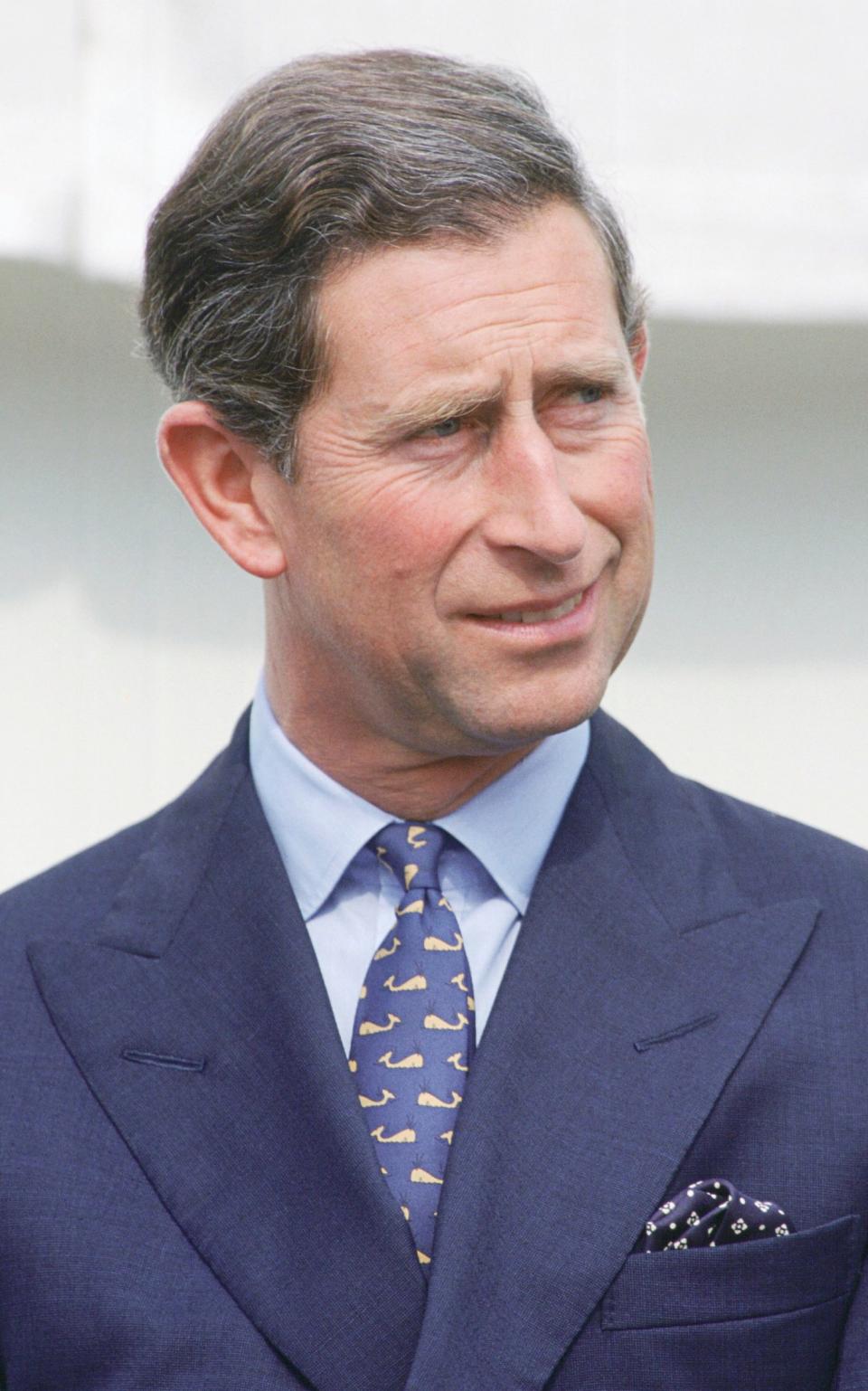King Charles’ rules for finding just-novelty-enough ties

King Charles has gained a reputation for being a snappy dresser – a phrase that’s gained even more significance since he was spotted sporting a pink silk tie emblazoned with a delicate powder blue tyrannosaurus rex motif. His Majesty’s penchant for a patterned tie is well-documented, but it seems to have reached new heights since he embraced another accessory: the Crown.
However, it has recently emerged that there’s a notable reason that this dino-centric tie has been worn by the monarch a number of times since his accession. According to royal biographer Robert Hardman’s new book, Charles III: New King. New Court, this tie is understood to have been given to him by a member of his family since as a coded reference to his new title of Charles III Rex, or C-Rex (geddit?).

However, more than being a good pun, the wearing of this tie conveys something arguably far greater. In a serious job surrounded by serious people in situations with very prescribed dress codes, a patterned, erring on novelty, tie is one of the few ways King Charles can express both his personal style and his sense of humour. The C-Rex is one of a number of lighthearted ties in the King’s wardrobe – he also owns a Greek flag design (though this was transformed from being perceived as a heartwarming nod to his father’s homeland to a political statement when he wore it at Cop28 last year) and numerous Hermès creations, including one with an owl and pussycat print.


Despite the well-documented breakdown in the strict rules of attire in many areas of life, ties still represent a rare chance to inject fun into an otherwise serious outfit for many men in a variety of careers, from the law to medicine. It’s certainly something that my father, Alan Carvell, who started his financial career in the late 1970s, is all too familiar with. To this day, when he heads into London, it’s mostly with a jazzy patterned tie half-Windsored around his neck.

“When I started in the City, it was frowned upon to wear anything other than a white shirt and a plain suit every day,” he says. “A patterned tie was a way of individualising your outfit, but also a way of showing something that you enjoyed – and created a talking point in meetings with clients.” No wonder, then, that at its peak in the late 1980s, his tie collection topped about 40 eye-catching iterations. Today, with the advent of casual Friday, this has been scaled back significantly, but his most beloved remains a roaring-red silk number from Thomas Pink, adorned with tiny martini glasses containing even tinier olives – a testament to his appreciation of a well-made cocktail. You can take the man out of the Eighties, but you can’t take the Eighties out of the man.


However, what hasn’t changed is that this connection between tie pattern and personality still runs deep in London’s financial district – something recognised by 37-year old financier, Patric Okumi, who launched accessories brand Adinkra London in 2020.
“When I was looking for ties for work, I simply didn’t see any that incorporated patterns that spoke to me,” he says. “I don’t play golf, I don’t have a boat and I’m not from the French aristocracy.” As a man with Ghanaian heritage raised in the UK, Okumi launched his brand alongside co-founder Sean Ayeltigah with three hand-finished silk ties, each featuring reinterpreted traditional Ghanaian prints.

“I felt I had an opportunity, because of my very strong cultural background, to pay homage to iconography that originates from the country of my birth, but in a way I and other men could wear every day.” Two years later, his customers include doctors, lawyers and bankers across a diverse spread of age ranges and cultural backgrounds. “We want people to join us on our journey to discover Africa’s stories, whatever their heritage,” says Okumi. “One of our most popular ties features the Nsaa symbol, which means quality of excellence. So it’s not just a pattern, it’s the meaning behind it. It’s something you wear to feel your best.”

And while King Charles might now be in his 70s, it is notable that a younger crowd is rediscovering the joy of patterned ties, albeit not necessarily for the office.
“We’re producing and selling more ties now than at least 2019,” says Michael Hill, the managing and creative director of British menswear brand Drake’s. Founded in 1977, the brand now has shops in London and New York, but still makes its ties in its factory in London’s East End. “We have older customers, but there are so many young customers who are choosing to wear a tie to go out in the evening, even if they aren’t wearing one at work,” Hill adds.

For these younger customers, patterns are still the order of the day, particularly stripes and paisley right now, both a staple of the brand’s oeuvre since the 1970s. And while the message being communicated might not be a coded nod to their sense of humour or royal position, the idea that a vibey print is a way of communicating a more formal personal style is just as not-so-subtly coded in a world still dominated by sportswear – and a reason why patterned ties won’t be going extinct any time soon.



